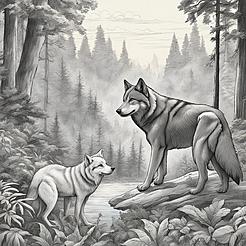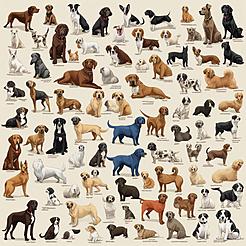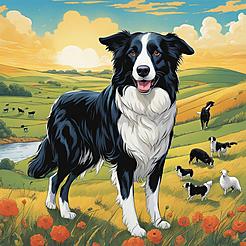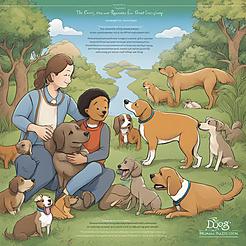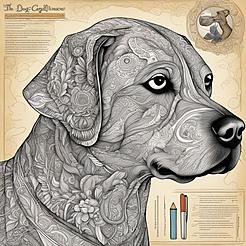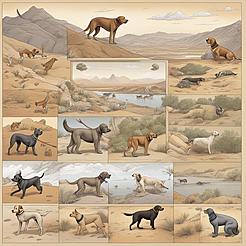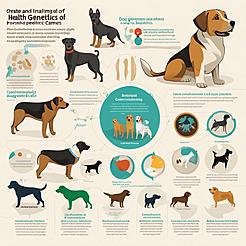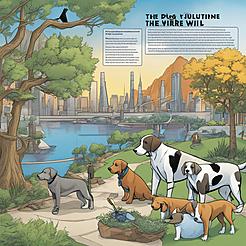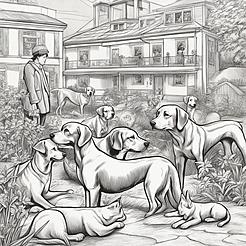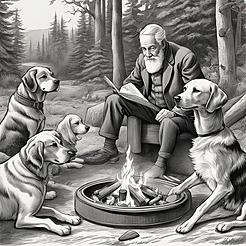 henrydjacob
henrydjacob- Chapter
- 2024-04-15

In the intricate tapestry of evolution, one thread stands out as a testament to the extraordinary power of human influence - selective breeding. As we delve into the chapter 'The Influence of Selective Breeding', we uncover the profound impact that this practice has had on shaping the physical characteristics and behaviors of dogs, illuminating the remarkable journey of canine evolution guided by human hands.
Selective breeding, also known as artificial selection, is a process wherein humans intentionally choose which animals will breed based on desired traits. This deliberate manipulation of genetic inheritance has played a pivotal role in molding the diverse array of dog breeds we see today. From the towering Great Dane to the petite Chihuahua, each breed bears the imprint of centuries of selective breeding, a testament to the power of human ingenuity in shaping the canine world.
The history of selective breeding can be traced back thousands of years, with humans selecting dogs for various purposes such as hunting, herding, guarding, and companionship. Through careful breeding practices, specific traits were accentuated while others were diminished, leading to the emergence of distinct breed characteristics that define each breed's appearance, temperament, and abilities.
Consider the noble German Shepherd, a breed renowned for its intelligence, loyalty, and versatility. Bred originally for herding sheep, this remarkable breed has since become a stalwart companion, service dog, and guardian. Through generations of selective breeding, German Shepherds have been honed to excel in a wide range of roles, showcasing the transformative power of human influence on canine traits.
Selective breeding has not only shaped the physical attributes of dogs but has also influenced their behaviors and instincts. Take, for example, the Border Collie, a breed celebrated for its exceptional herding abilities and intense focus. Through targeted breeding for herding proficiency, Border Collies have developed a unique set of cognitive skills that set them apart as one of the most intelligent and trainable breeds in the canine kingdom.
The impact of selective breeding extends beyond mere aesthetics and abilities; it has also led to the emergence of breed-specific health concerns. Certain breeds, such as the brachycephalic breeds like Bulldogs and Pugs, have been selectively bred for their distinctive flat faces. While these features may be endearing, they can also predispose these breeds to respiratory issues and other health challenges, highlighting the ethical considerations that come with shaping canine traits through selective breeding.
In the realm of selective breeding, the power of human influence is both a blessing and a responsibility. As we marvel at the myriad breeds that grace our lives, we must also pause to consider the ethical implications of our breeding practices. Balancing breed standards with the well-being of individual dogs is a delicate dance, one that requires a deep understanding of genetics, health, and canine welfare.
As we reflect on the influence of selective breeding, we are reminded of the profound impact that humans have had on the evolution of dogs. Our choices, guided by both practical needs and aesthetic preferences, have shaped the canine world in ways both wondrous and worrisome. The story of selective breeding is a testament to the intricate dance between nature and nurture, where human hands have sculpted the canine form with both care and consequence.
In the chapters that follow, we will continue to explore the rich tapestry of the dog's journey, delving deeper into the complexities of canine evolution and the enduring bond between humans and dogs. As we unravel the mysteries of the canine world, let us carry with us the appreciation for the power of human influence and the lessons of natural selection that have shaped our beloved companions through the ages.
References:
- Coppinger, Raymond, and Lorna Coppinger. "What is a dog?" University of Chicago Press, 2016.
- Serpell, James. "In the company of animals: A study of human-animal relationships." Cambridge University Press, 1996.
